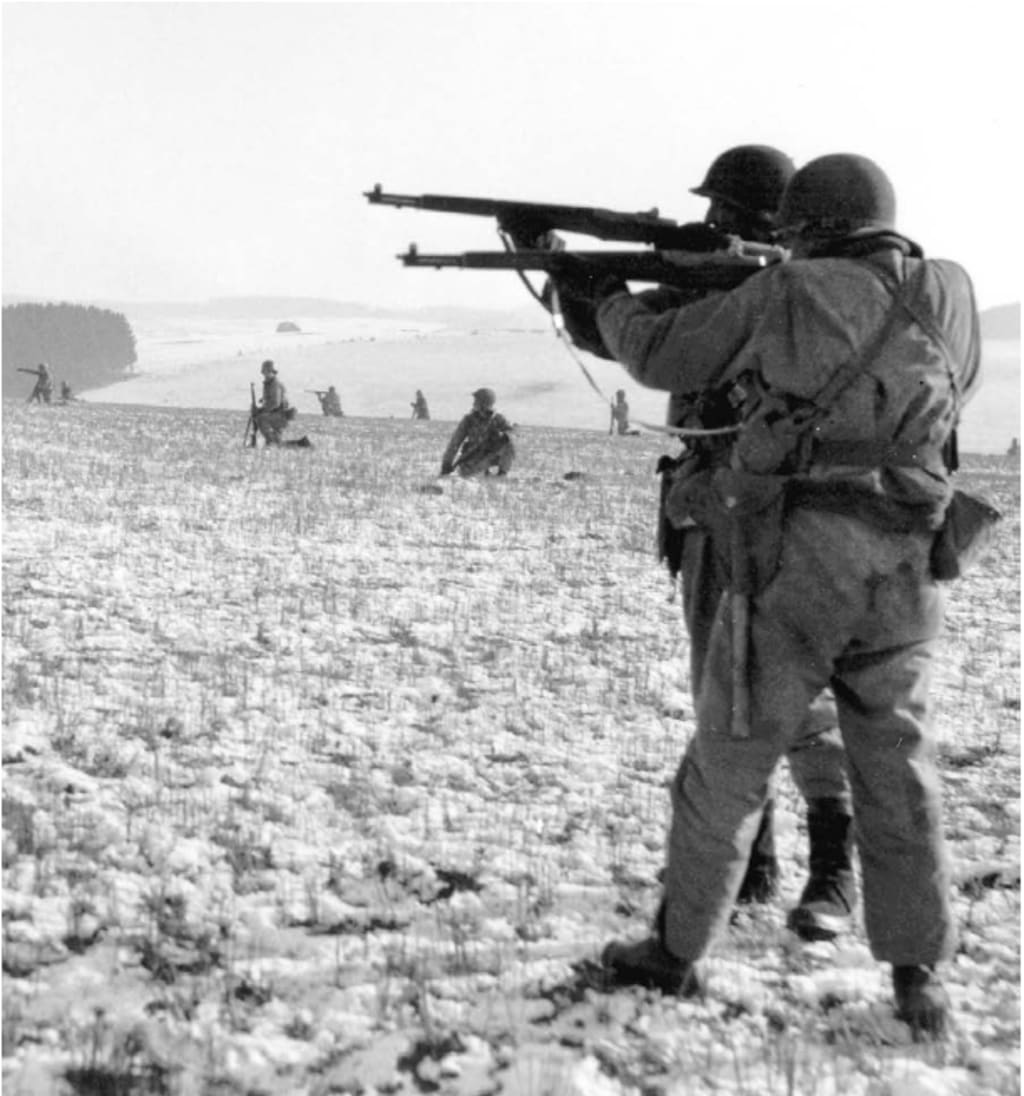Two of My Uncles Fought in the World War II Battle of the Bulge
My uncles Lewis and George Mansfield served with the U.S. Army in the European Theater after D-Day and fought in the famous Battle of the Bulge against the Germans.

“The Battle of the Bulge, also known as the Ardennes Counteroffensive, was the last major German offensive campaign on the Western Front during World War II, and took place from 16 December 1944 to 25 January 1945.”
Brothers Lewis and George Mansfield, who were one year apart in age, weren’t in the same U.S. Army unit during the Battle of the Bulge, so they had to go to extra lengths to see one another. Uncle Lewis, an Army paratrooper, even “borrowed” a military vehicle one time and drove it a hundred miles or so to go visit George. Lewis’s commander was not pleased, but he let him off with light punishment after Lewis returned to his unit.
Uncle George was a field medic and wound up getting captured by the Germans on two occasions. The first time, he managed to escape from a German Prisoner of War (POW) camp. The second time he got captured, he was in danger of being shot by the Germans, but they decided to let him go because he had helped treat their injuries. Besides, the war was almost over, they knew they were losing, and they just wanted to try to get back home alive themselves. George was fortunate to get out of that situation alive.
Uncle George passed away about twenty years ago, and Uncle Lewis died this year at the age of 95. He lived in the small town of Edgar Springs, Missouri. I visited him at his home in November 2019 during the Thanksgiving holiday week. Because he was all alone most of the time, he was thrilled to see us. I also was able to talk to him on the phone a week before he passed away.
For someone aged 95, Uncle Lewis was still mentally alert, so we had great fun talking with him and listening to his stories on different topics.
Here’s a video I took of him telling some of his fascinating, and often humorous, tales.
George and Lewis Mansfield were part of America’s “greatest generation” and, along with thousands of others, fought and won against the Nazis to secure the freedoms we enjoy today. They are all true heroes.
“In December 1944, the Nazi army surprised U.S. and Allied forces in the frozen forests of Belgium. Badly outnumbered, the U.S. lost 10,000 soldiers amid frigid conditions in the war’s deadliest conflict…the Battle of the Bulge.”
More about the Battle of the Bulge:
“The Battle of the Bulge, also known as the Ardennes Counteroffensive, was a major German offensive campaign on the Western Front during World War II and took place from 16 December 1944 to 25 January 1945. It was launched through the densely forested Ardennes region of Wallonia in eastern Belgium, northeast France, and Luxembourg, towards the end of the war in Europe. The offensive was intended to stop Allied use of the Belgian port of Antwerp and to split the Allied lines, allowing the Germans to encircle and destroy four Allied armies and force the Western Allies to negotiate a peace treaty in the Axis powers’ favor.
The Germans achieved a total surprise attack on the morning of 16 December 1944, due to a combination of Allied overconfidence, preoccupation with Allied offensive plans, and poor aerial reconnaissance due to bad weather. American forces bore the brunt of the attack and incurred their highest casualties of any operation during the war. The battle also severely depleted Germany’s armored forces, and they were largely unable to replace them. German personnel and, later, Luftwaffe aircraft (in the concluding stages of the engagement) also sustained heavy losses. The Germans had attacked a weakly defended section of the Allied line, taking advantage of heavily overcast weather conditions that grounded the Allies’ overwhelmingly superior air forces.
Fierce resistance on the northern shoulder of the offensive, around Elsenborn Ridge, and in the south, around Bastogne, blocked German access to key roads to the northwest and west that they counted on for success. Columns of armor and infantry that were supposed to advance along parallel routes found themselves on the same roads. This, and terrain that favored the defenders, threw the German advance behind schedule and allowed the Allies to reinforce the thinly placed troops. The farthest west the offensive reached was the village of Foy-Nôtre-Dame, southeast of Dinant, being stopped by the U.S. 2nd Armored Division on 24 December 1944. Improved weather conditions from around 24 December permitted air attacks on German forces and supply lines, which sealed the failure of the offensive.
On 26 December the lead element of Patton’s U.S. Third Army reached Bastogne from the south, ending the siege. Although the offensive was effectively broken by 27 December, when the trapped units of the 2nd Panzer Division made two break-out attempts with only partial success, the battle continued for another month before the front line was effectively restored to its position prior to the attack. In the wake of the defeat, many experienced German units were left severely depleted of men and equipment, as survivors retreated to the defenses of the Siegfried Line.
The Germans’ initial attack involved 410,000 men; just over 1,400 tanks, tank destroyers, and assault guns; 2,600 artillery pieces; 1,600 anti-tank guns; and over 1,000 combat aircraft, as well as large numbers of other armored fighting vehicles (AFVs). These were reinforced a couple of weeks later, bringing the offensive’s total strength to around 450,000 troops, and 1,500 tanks and assault guns. Between 63,222 and 98,000 of these men were killed, missing, wounded in action, or captured. For the Americans, out of a peak of 610,000 troops, 89,000 became casualties out of which some 19,000 were killed. The “Bulge” was the largest and bloodiest single battle fought by the United States in World War II and the third-deadliest campaign in American history.”
__________________
Thanks for reading. Copyright Terry Mansfield. All rights reserved.
About the Creator
Terry Mansfield
Trying to be the best writer I can be. Specialist in eclecticism.






Comments
There are no comments for this story
Be the first to respond and start the conversation.